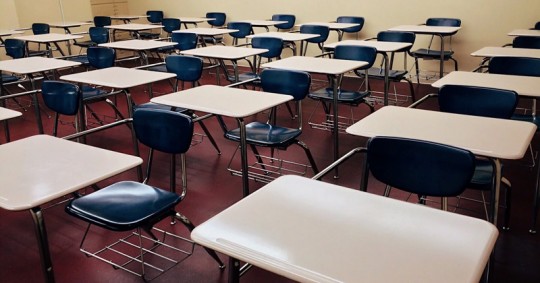Just Over Half Of Escambia Students Returning To Traditional School; Others Are Remote, Virtual
August 24, 2020

Just over half of the the students in Escambia County are returning to a traditional brick and mortar school on this first day of classes.
Due to the COVID-19 pandemic, parents were presented with three options for their child’s education — traditional, remote learning or virtual school (in-depth explanations of each are at the end of this story).
According to the latest data from the Escambia County School District provided by Superintendent Malcolm Thomas late Friday afternoon, 54.6% of students chose traditional school, 38.8% chose remote learning and 6.6% picked virtual school.
Here are the choices made by school:
The three options, in more detail, are:
Traditional -
This model represents a return to the school campus and the classroom where students will interact directly with their teacher(s) and classmates. If an option is not selected in FOCUS for a student, then this will be the default selection. The school day will follow the standard bell times and standard schedule that includes all the core classes and other subject areas. In short, it represents a return to the traditional school environment – with several significant changes involving enhanced health and safety precautions.
Remote Learning -
The remote learning model is designed for families who would like to maintain their connection to their enrolled school, but don’t yet feel comfortable sending their student(s) back to school in August. Students will attend school remotely, following the standard school schedule and bell times. The lessons, assignments and grading will be similar to traditional school.
Virtual School -
The virtual model is ideal for students who wish to have more control over their learning path and pace, and for whom a flexible daily schedule is important. In this learning model, students often work on assignments in a virtual environment during non-traditional hours and maintain contact with their teacher and classmates using web-based class sessions, email, text messages and telephone calls.
Comments
8 Responses to “Just Over Half Of Escambia Students Returning To Traditional School; Others Are Remote, Virtual”




@Stumpknocker – The data. I’m sure there are a number of reasons. However, people of all stripes have ignored masks and distancing. Go maskless to a protest, a party, a motorcycle rally, church, or a store, and spread this virus, even to people who are following the guidelines.
@StumpKnocker
Do you happen have a source for minorities not practicing social distancing?
Even if that is the case, the hospitalization rate and mortality rate are both significantly higher for minorities. If you are African American and contract COVID-19, you are five times as likely to be hospitalized and twice as likely to die as a Caucasian.
Dang it Stumpknocker! You answered your own question. But really I am concerned that some of the kids will not get what they need at home. Not every parent, or household is equipped to assist their children at home. I sure would not have wanted to assist my children. Number one I am not a teacher, and when a child goes to school, usually starting in middle school, the teachers are specialized in their fields, Math, science, English. And it is pretty obvious by my comments I was not very attentive during English grammar class.
@Lee explain how minorities are a higher risk than others. When the pandemic hit yes in some areas not all minorities did have a spike in cases, but that was due to them not practicing social distancing. For example Easter this year where there was huge crowds of people at Pensacola Village, and there’s plenty more examples.
@Rafael – Risk is higher for minorities, many living in those areas. Lots of those kids are also likely to have grandparents living in their homes.
What’s the difference between a low income and
high income school? Shouldn’t every school
offer the same quality of education?
I wish it were less than half, buy my kid will be at school today. Hope my daughter doesn’t bring it home with her.
Interesting to observe that all the low income schools have a higher percent of online learners. Is their school that bad that they’d rather stay home? Were they targeted intentionally with pro-distance learning ads for a reason? Just somewhat curious this morning. Thoughts?